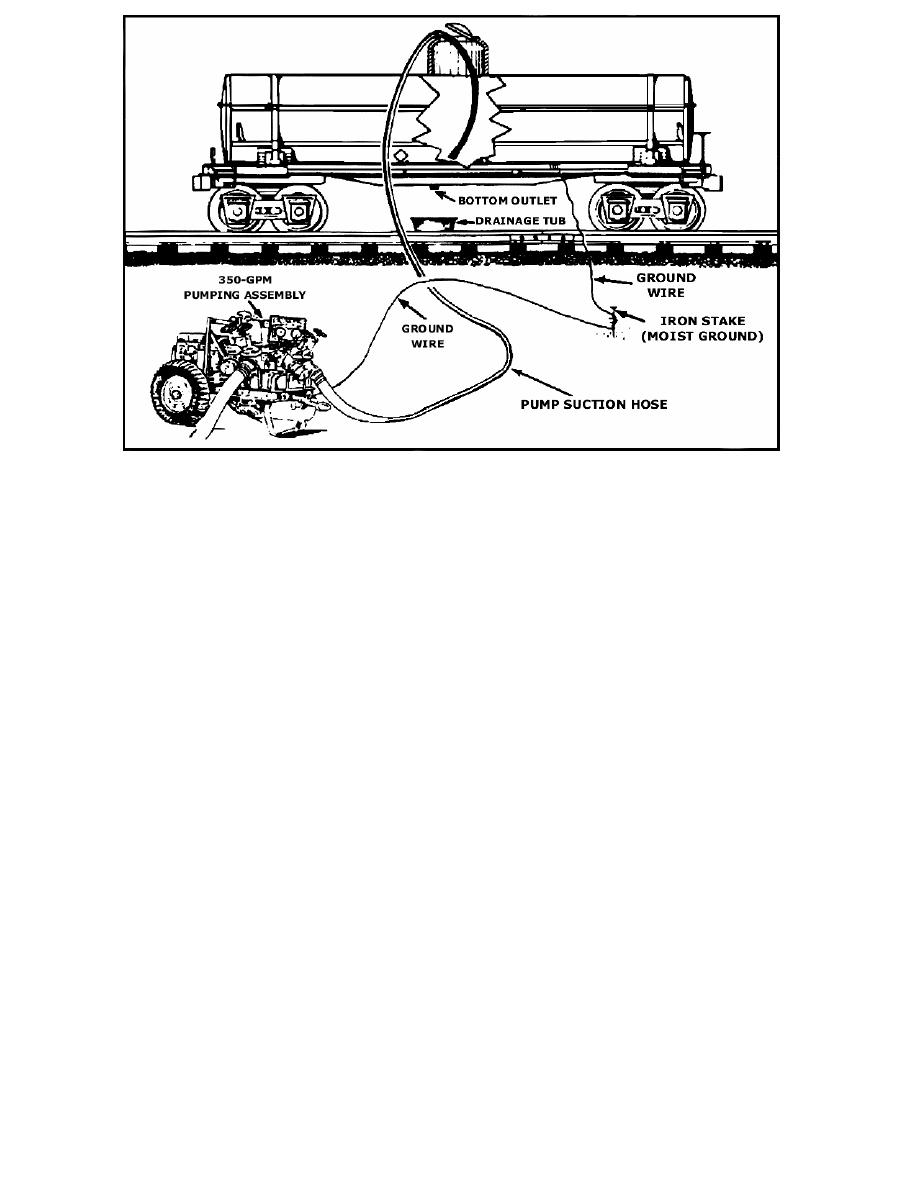
Figure 9-2. Loading from the dome.
Follow-Up Procedures. After loading the car follow-up procedures are performed. Allow product to
stand for 15 minutes so that suspended water or sediment can settle. Gage and sample contents of tank.
Take the temperature of product, correct volume to 60 degrees F, and record data. Retain sample for
reference until car has been delivered. If tank contains any water or sediment, drain it from the tank, and
again load product until the tank is full. After daily closing gages are taken, compare total storage tank issue
with total quantities loaded on tank cars. Report excessive loss to the proper authority. When a tank car is
full of product, replace bottom outlet, cap, and close and lock the dome cover. Place an identification seal
on the dome cover; it must be an approved seal, one which cannot be removed without being destroyed.
The receiver is assured that the car has not been tampered with if the seal is in place. Record the seal
marking on all shipping papers. Remove the drainage tub from under the bottom outlet and discard any
product that is in the tub. If the car has DANGEROUS-EMPTY placards, remove them and replace them
with FLAMMABLE placards. Some placards bear the two signs; they only need to be reversed. Disconnect
grounding wire from tank car; remove derails, if provided; and remove TANK CAR CONNECTED signs.
Release brakes and remove car from transfer area.
PART F - PROCEDURES FOR UNLOADING TANK CARS
Equipment Preparation. Inspect the unloading equipment such as pumps, hose, loading racks, pipelines,
and manifolds to see that they are clean, free of any contaminating product, and in good operating condition.
When possible, use equipment exclusively for handling one product. If it is necessary to use the same
equipment for handling several products, drain the equipment thoroughly of preceding product before
introducing the new product into the line. If product in the tank car is to be transferred to cans, drums, tank
trucks, or semitrailers inspect the containers or vehicle and make sure that they are clean and in good
condition. If the product in the tank car is to be transferred to storage tanks, make sure that the tanks are
clean and suitable for receiving the assigned product. If the tanks are not clean, they must be freed of
vapors and cleaned before receiving product.
Sampling and Gaging Receiving Tank. When a receiving tank already contains product, gage and sample
the contents of tank. Take the temperature of the product, correct volume to 60 degrees Fahrenheit, and
record data. Make sure that there is enough space (outage) in tank to receive product. Inspect the sample
visually to make sure the product in the receiving tank is the same as product in the tank car. If there is any
doubt as to the identity or quality of the product, have the test performed to verify correct grade and quality
9-5
QM 5094



 Previous Page
Previous Page
